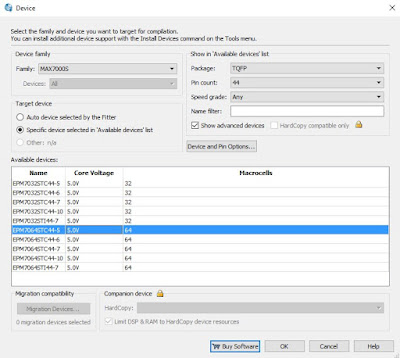After replicating the function of a 74HC00 in part 8, I became a little obsessed with creating a programmable CPLD that would fit a DIP format. So after a little bit of playing about in DipTrace I came up with this.
I created two versions, a 14 pin version and a 16 pin version. Both use the ATF1504AS(L) but in a TQFP package. I also used 0603 SMD parts for the Capacitors and the Resistors, which although they are tiny, aren't too bad to solder on by hand. Just make sure you use Flux.
Because the PLCC and TQFP have different pinouts I first needed to find the correct MAX product to write for. I am using the ATF1504ASL-25AU44-T which translates to this part from the conversion guide.
So I'll copy the existing project and set the part to EPM7064STC44-5.
Now I upload it as a 1504ASL ** NOTE the "L"
I had to make special jig to program the CPLD as used 1mm pitch not 1.25mm.
Here is the comparison between the 74HC00 and the CPLD.
Here it is working just fine in my Z80MBC.



















